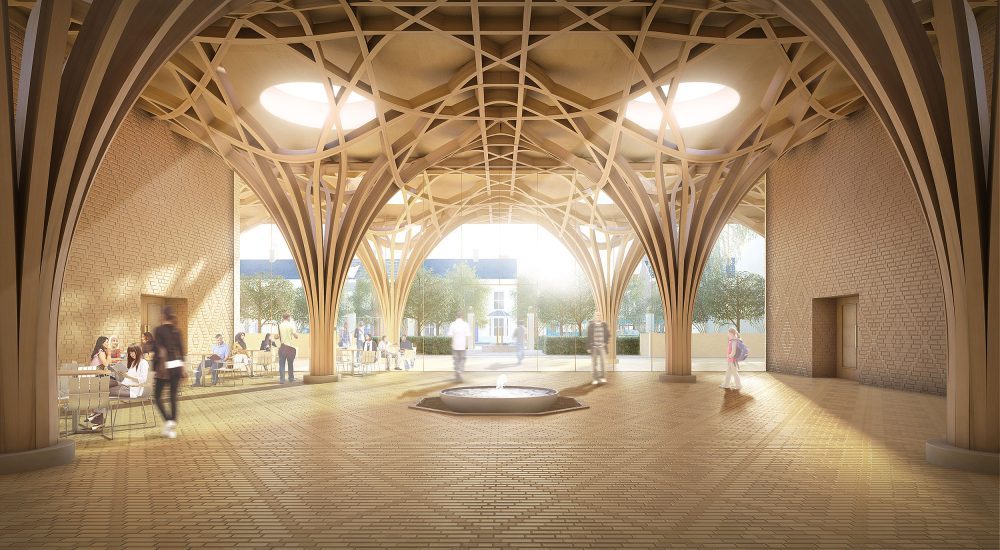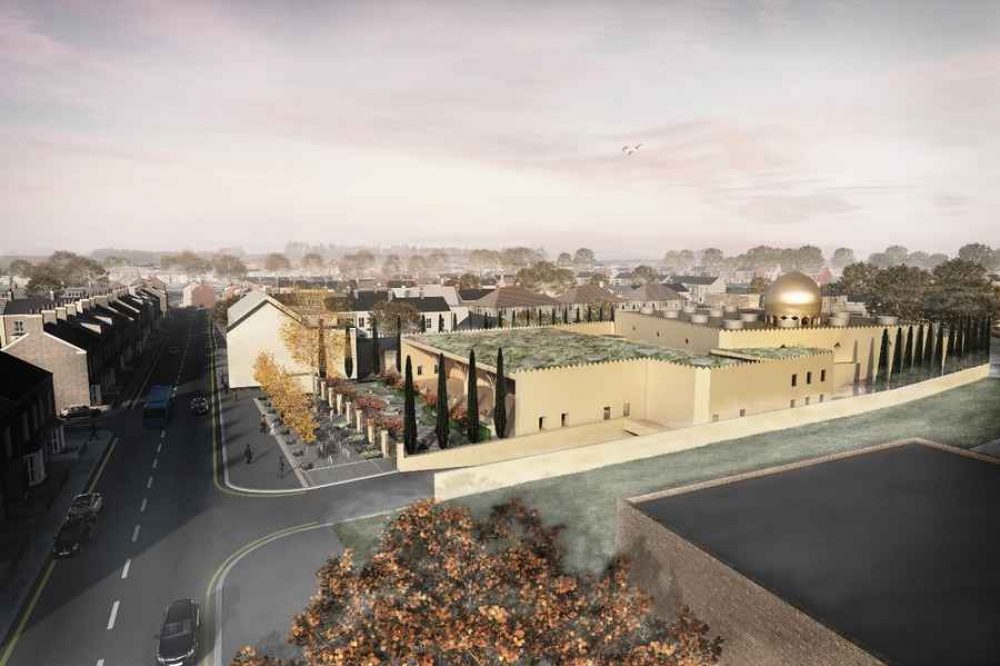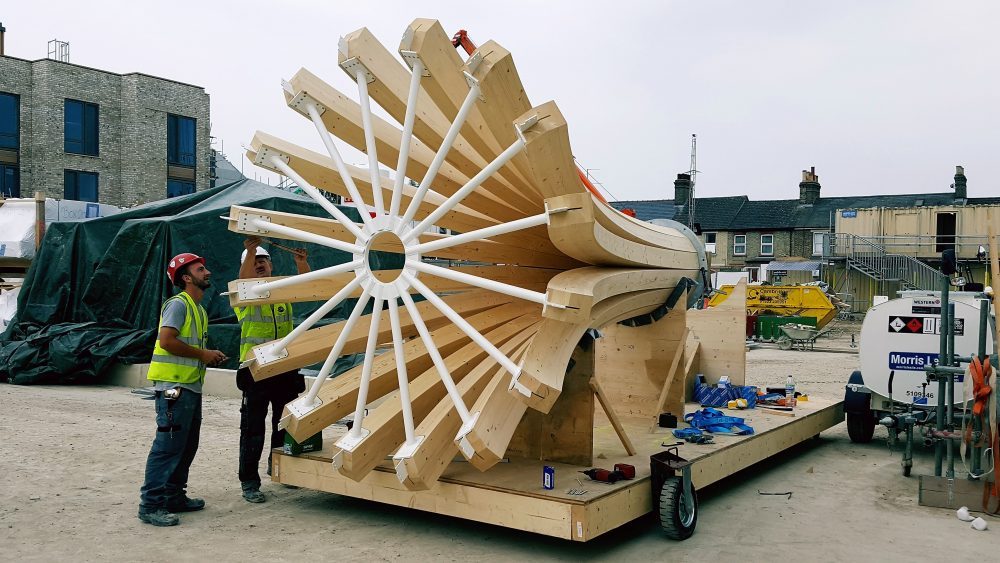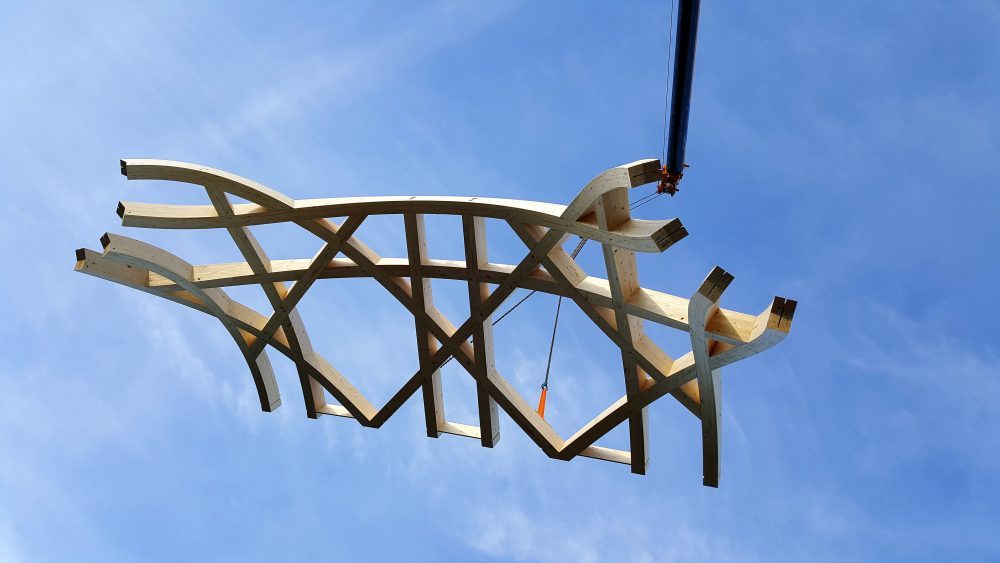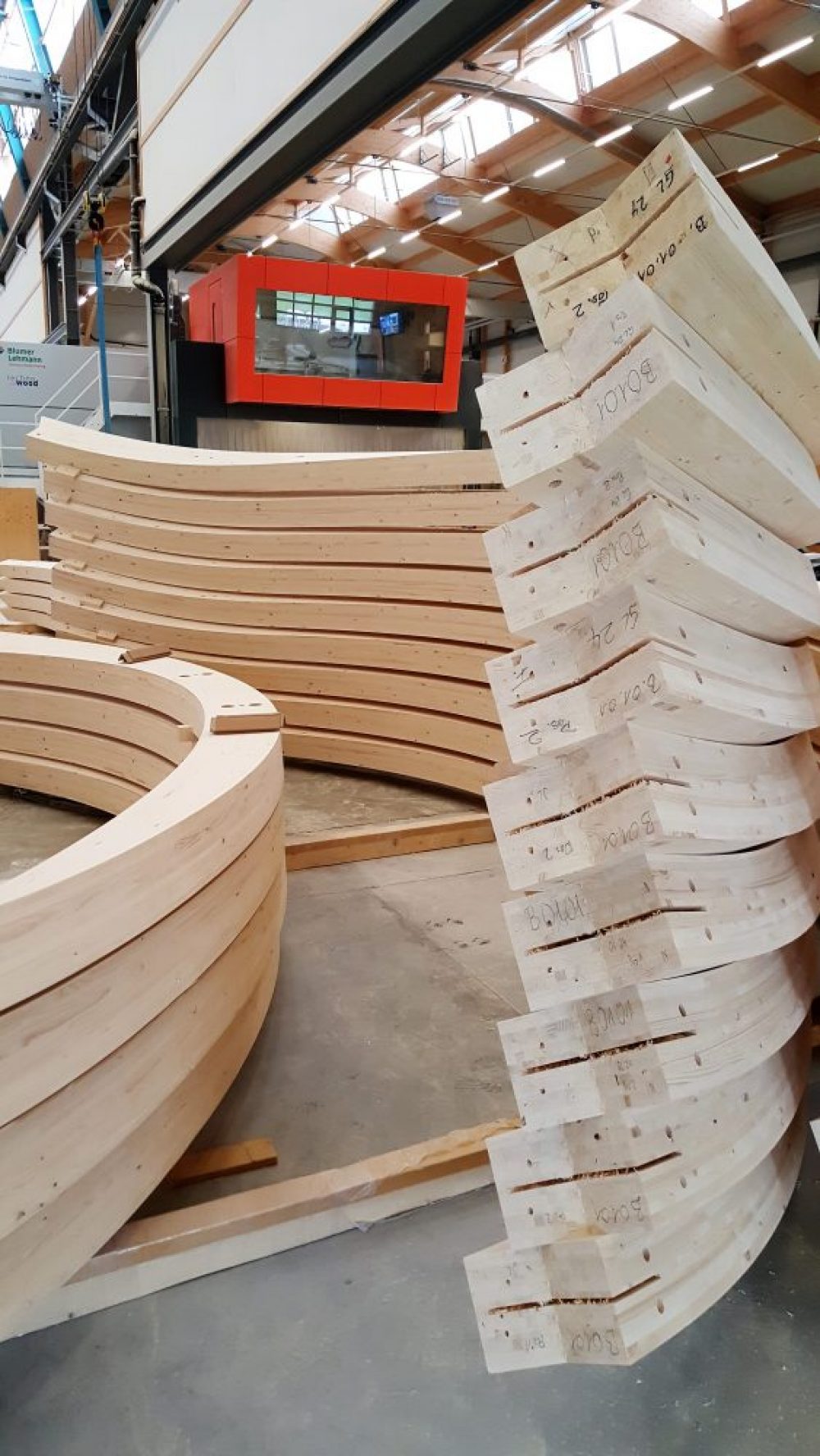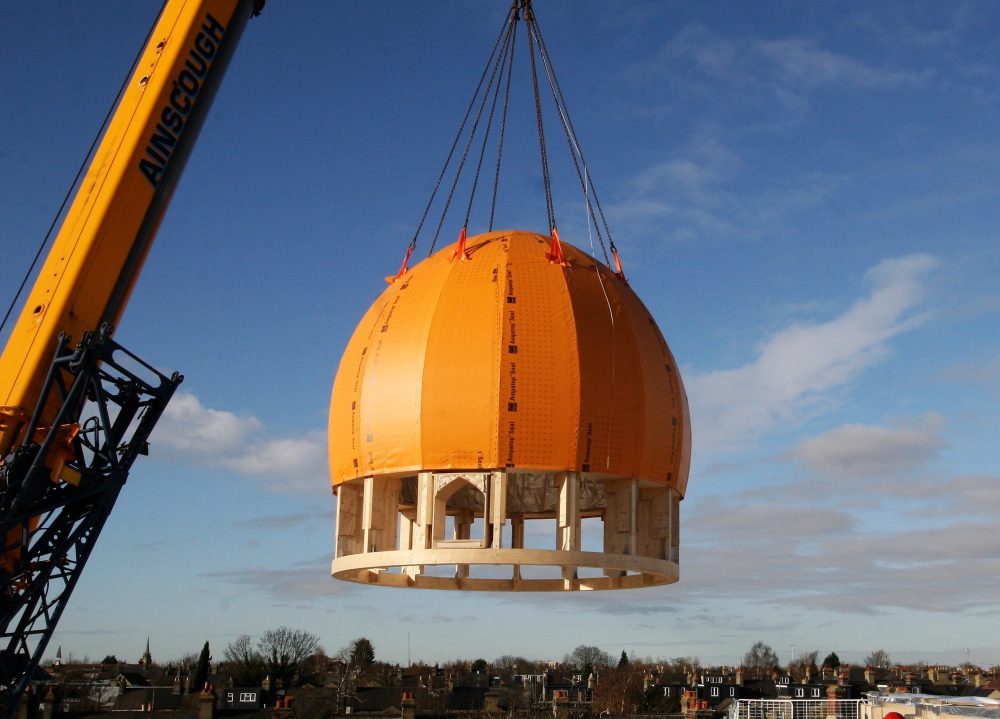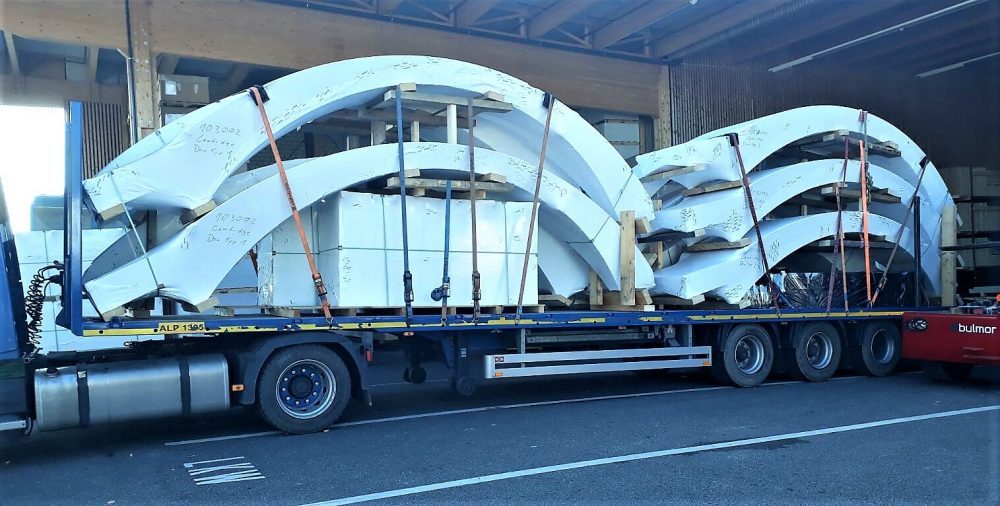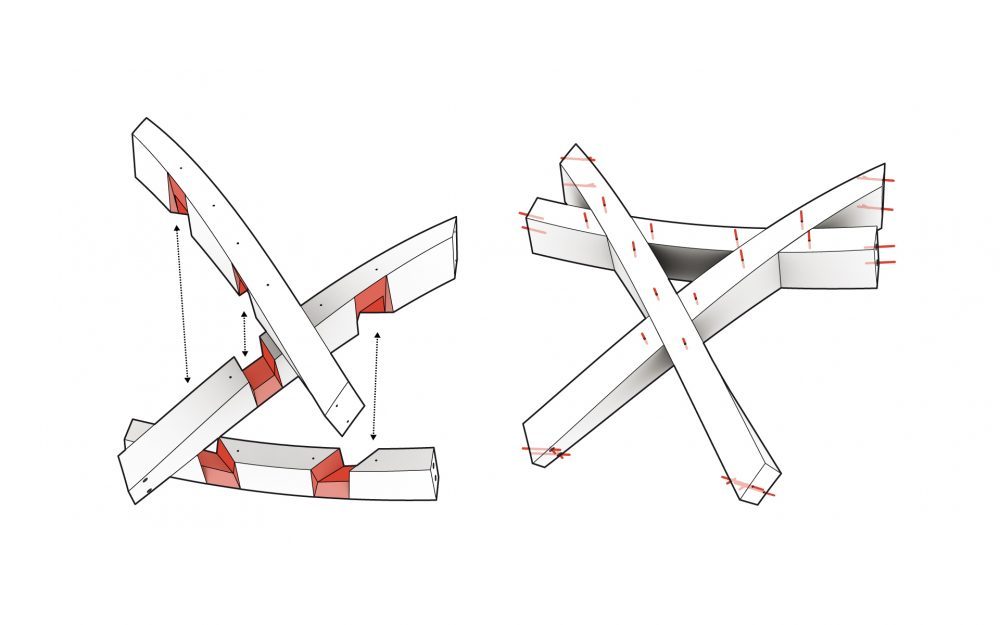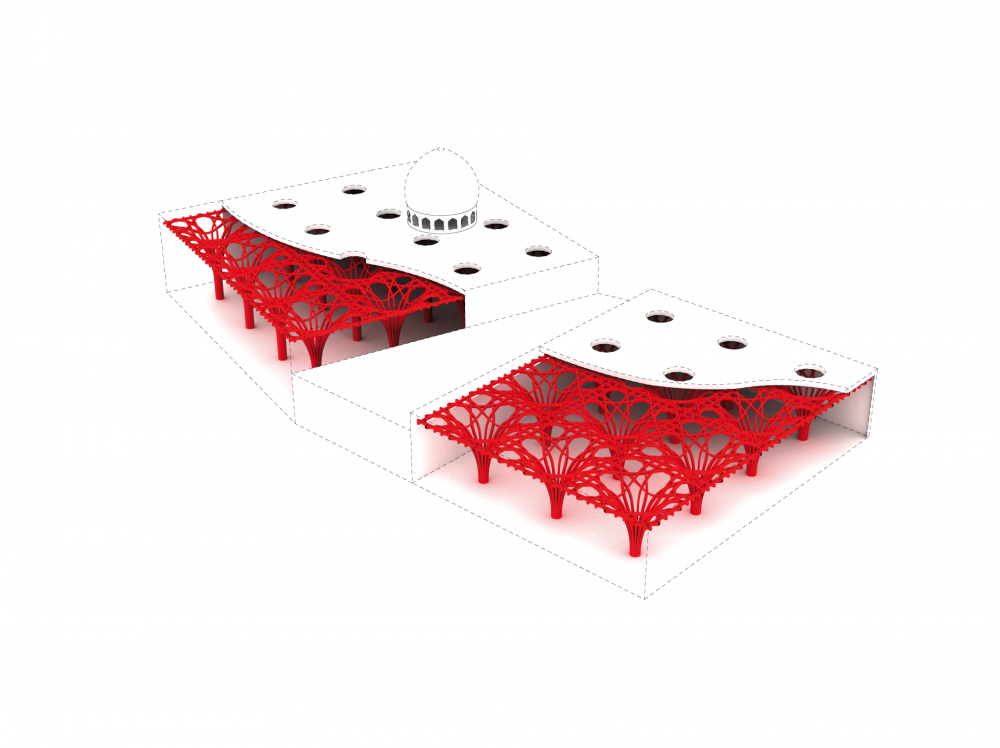In Cambridge, England, Marks Barfield Architects (MBA) is erecting a timber-structured mosque inspired by geometric design and landscaping found throughout the Islamic world.
The Cambridge Mosque Project, founded by Dr. Timothy Winter in 2008, purchased the one-acre site in 2009. Allées of cypress and linden trees ring the mosque, which occupies a symmetrical 27-feet-by-27-feet grid. The new house of worship will be able to accommodate approximately 1,000 worshippers.
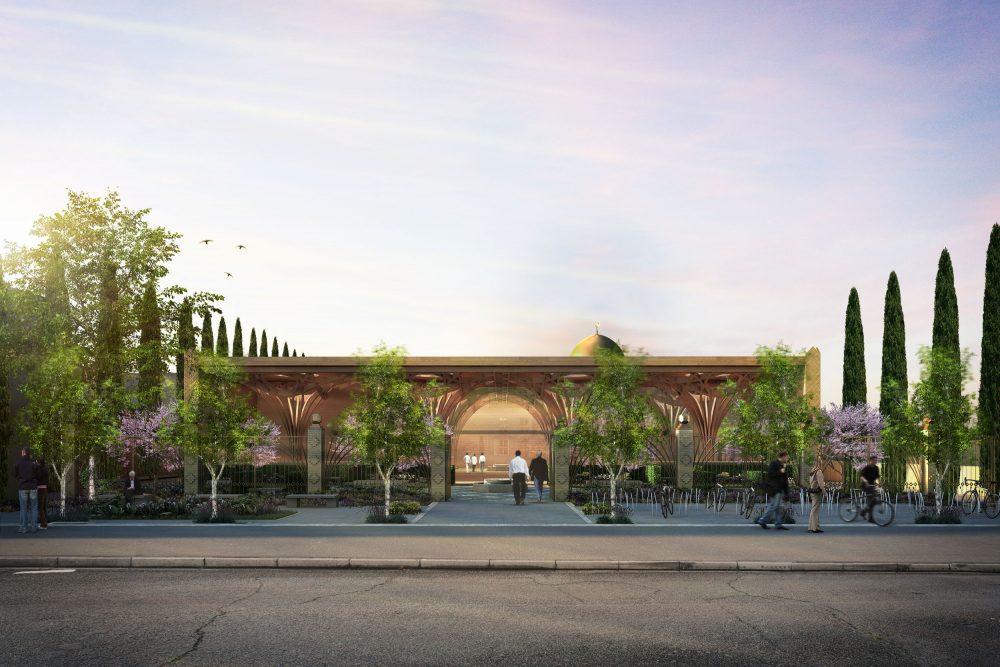
In a statement to The Guardian, the deceased architect David Marks viewed the project as a shift from the “preponderance of Ottoman mosques” found throughout the United Kingdom. MBA saw an opportunity to design an Islamic center unique to the British community, with a massing similar to the surrounding Georgian terraces, featuring a height of three stories, brick elevations, and a subtle dome rather than a towering minaret.
For the project, MBA reached out to Swiss timber-construction specialist Blumer–Lehmann AG (BLA). Thirty free-form timber columns, built of curved glue-laminated beams, form the primary support structure of the Cambridge mosque. Each column flowers into a network of latticed arches and beams that is topped with a lightweight, 20,000 square-foot timber roof. Rows of circular skylights are embedded above the supporting columns, allowing for the significant diffusion of natural light throughout the prayer space.
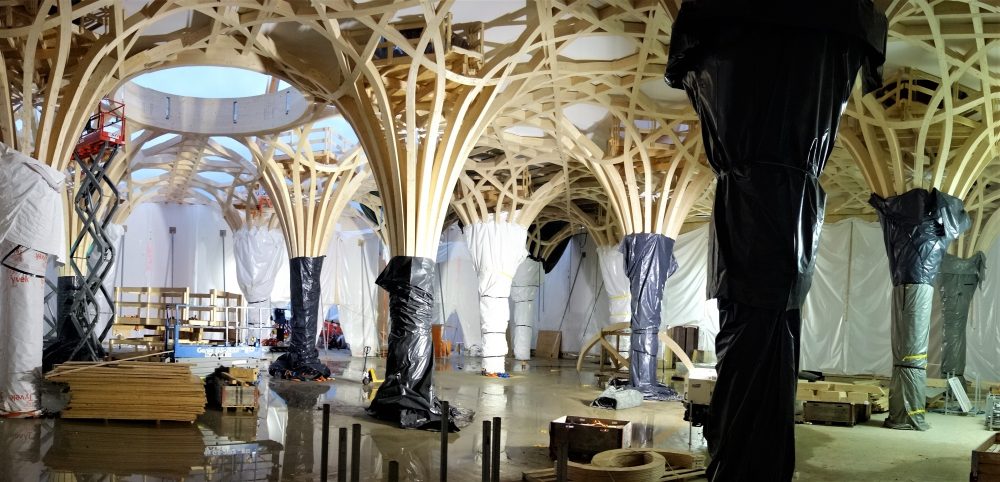
Design-to-Production (DP), a Zurich-based firm at the forefront of building information modeling, was commissioned by BLA to optimize the timber structural system’s geometry, establish a pre-fabrication and assembly strategy, and develop a comprehensive 3-D model of the project.
Through parametric design, DP whittled down the project’s 6,000 structural joints to just 145 different timber parts. Then the firm plugged in their digital fabrication data to a 5-axis CNC milling machine to mass-produce the timber components along with pre-assembly instructions and drawings. After being transported 900 miles over land and sea to the United Kingdom, the components were assembled in under a month.
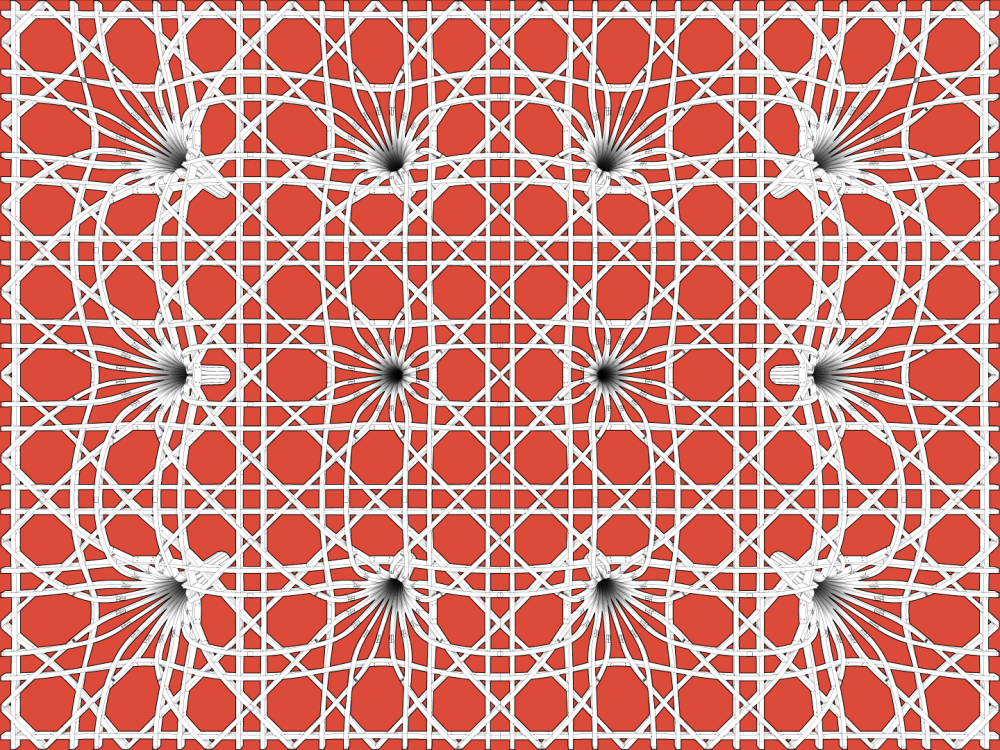
The onion-dome, with a base of arched clerestory windows, reaches a height of 30 feet and is placed atop the truss system made of glue-laminated beams.
Construction for the project should wrap up in 2018 and will open in January 2019.

